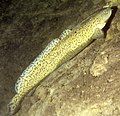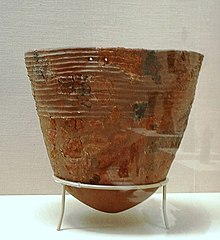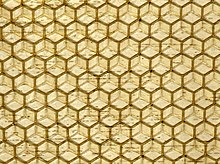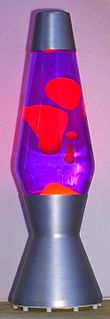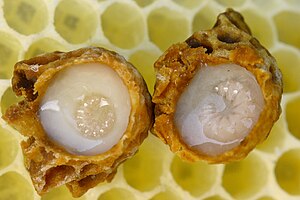Alpine valley, like Oldest Dryas
The Oldest Dryas is a biostratigraphic subdivision layer corresponding to an abrupt cooling event, or stadial, which occurred during the last glacial retreat. The time period to which the layer corresponds varies between regions, but it is generally dated as starting at 18.5-17 ka BP and ending 15-14 ka BP. As with the Younger and Older Dryas events, the stratigraphic layer is marked by abundance of the pollen and other remains of Dryas octopetala, an indicator species that colonizes arctic-alpine regions. In the Alps, the Oldest Dryas corresponds to the Gschnitz stadial of the Würm glaciation. The term was originally defined specifically for terrestrial records in the region of Scandinavia, but has come to be used both for ice core
stratigraphy in areas across the world and to refer to the time period
itself and its associated temporary reversal of the glacial retreat.
Dating
The edge of the ice in Greenland
The period was between 16,050-13,050 BC, from Roberts, 1998. A date from Kilkeel, Northern Ireland,
extends the start of the period to as early as 17,050 BC. A strong
sequence of carbon-14 dates derived from layered material in the
Hauterive/Rouges-Terres excavations on the northwest shore of Lake Neuchâtel in Switzerland, 1992–1993, places the end of the Oldest Dryas at about 12,700 BC, calibrated. The same date from Antarctica and the south China sea is 14,600 and 14,700, respectively, and a Greenland ice core indicates 14,500. David Miles refers to the Oldest Dryas as the last Heinrich event (H1) and dates it to between 16,500 and 14,500 years ago.
The ultimate standard to which all these dates are to be compared is the graph of the oxygen isotope ratio cycles,
which gives change in isotope concentration on the y-axis, with time on
the x-axis. The graph plots many events that are sharply defined, but
others are not. The selection of a terminal point is sometimes partially
arbitrary.
The end of the Oldest Dryas is sharply defined. The beginning is a
long, gently sloping band, probably no earlier than 17,050 BC, but the
date might be set later by approximately 1000 years. Data derived from
isotope variation of nitrogen and argon trapped in Greenland ice gives a high-resolution date for the end of the oldest Dryas at the sharp temperature rise of 14.67 ky BP.
Lake Neuchatel
The complete sequence of late Pleistocene climatic periods, defined for Northern Europe, are the Oldest Dryas (stadial), the Bölling (interstadial), the Older Dryas (stadial), the Allerød (interstadial), and the Younger Dryas (stadial). The Holocene begins immediately afterward. The last three are also Blytt-Sernander periods.
Sometimes, the Older Dryas is missing, as in the Jura Mountains of France,
or it is negligible in the evidence. In that case, the initial part of
the sequence appears to be Oldest Dryas (cold), Bølling-Allerød (warm),
Younger Dryas (cold). The Bølling-Allerød corresponds to the Windermere interstadial in Britain.
Often, however, the apparently-missing Older Dryas is a problem
of resolution in the evidence. Some scientists have undertaken
high-resolution studies, which combine a variety of climatological
methods. They, like the ones conducted on Owens and Mono Lakes, in California,
usually detect the Older Dryas. Even when it is detected, it appears to
be no more than a few centuries of slightly-cooler weather on the
oxygen isotope ratio graph.
Flora
During the Oldest Dryas, Europe was treeless and similar to the Arctic tundra, but much drier and grassier than the modern tundra. It contained shrubs and herbaceous plants such as the following:
- Poaceae, grasses
- Artemisia
- Betula nana, dwarf birch
- Salix retusa, dwarf willow
- Dryas octopetala
- Grassland (Inner Mongolia)
Fauna
Species
were mainly Arctic but during the Glacial Maximum, the warmer weather
species had withdrawn into refugia and began to repopulate Europe in the
Oldest Dryas.
The brown bear, Ursos arctos, was among the first to arrive in the north. Genetic studies indicate North European brown bears came from a refugium in the Carpathians of Moldavia. Other refugia were in Italy, Spain and Greece.
The bears would not have returned north except in pursuit of
food. The tundra must already have been well populated. It is likely
that the species hunted by humans at Lake Neuchâtel in Switzerland by the end of the period were present during it. Here are other animals present:
- Gavia arctica, black-throated diver
- Podiceps nigricollis, black-necked grebe
- Cygnus cygnus, whooper swan
- Aquila chrysaetos, golden eagle
The above birds are primarily maritime. They must have fed in the
copious glacial waters of the north that were just beginning to be
released.
- Lota lota, burbot
- Thymallus thymallus, grayling
- Rutilus rutilus, roach
- Salmo trutta, trout
- Salvelinus alpinus, char
The smaller mammals of the food chain inhabited the herbaceous blanket of the tundra:
- Discrotonyx torquatus, collared lemming
- Microtus oeconomus, root vole
- Microtus arvalis, common vole
- Chionmys nivalis, snowy vole
- Lepus timidus, Arctic hare
- Marmota marmota, marmot
In addition to bears and birds were other predators of the following small animals:
- Felis lynx, lynx
- Alopex lagopus, Arctic fox
- Canis lupus, wolf
Humans were interested in the large mammals, which included:
- Rangifer tarandus, reindeer
- Equus ferus, wild horse
- Capra ibex, ibex
Human prehistory
Jōmon pottery
Human cultures in Europe were Upper Palaeolithic and belonged to Cro-Magnon man. Neanderthals had long since disappeared by replacement or amalgamation with Homo sapiens. The Magdalenian culture of reindeer hunters prevailed in Western Europe. From the Carpathians eastward, the Epigravettian continued the prior Gravettian. In Japan, the Jōmon
culture had already become sedentary and was producing some food, and
possibly grew rice, but it was not at all urban. It was manufacturing
the first known pottery.
One of the most remarkable discoveries of the period was the domestic wolf, a distinct breed of Canis lupus, with smaller teeth. The domestic dog, Canis familiaris,
also has been found. It is thought that the animals helped with the
hunting, but they would, by the nature of the hunt, have gradually
become adept at herding.












